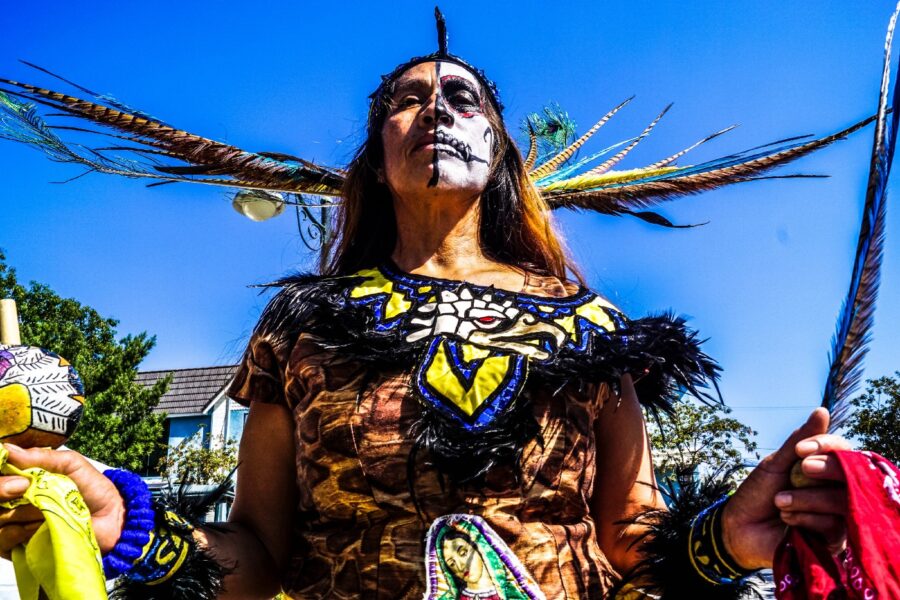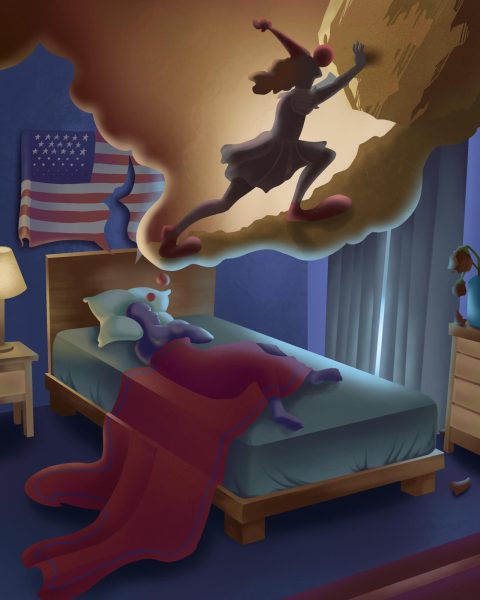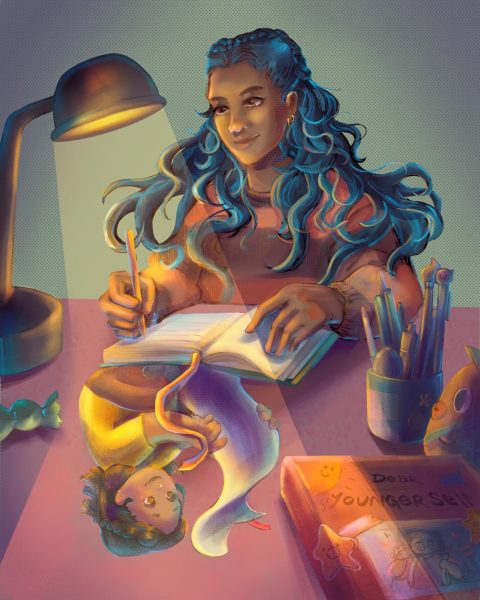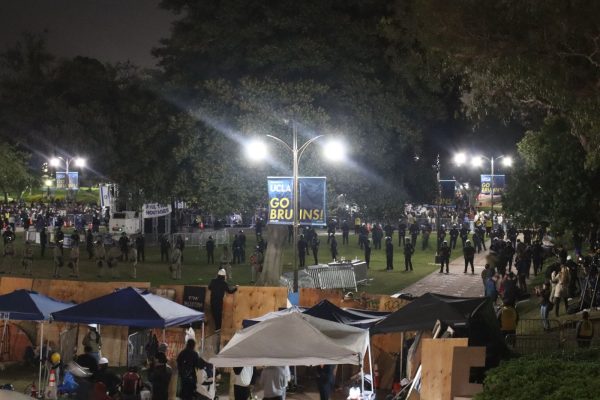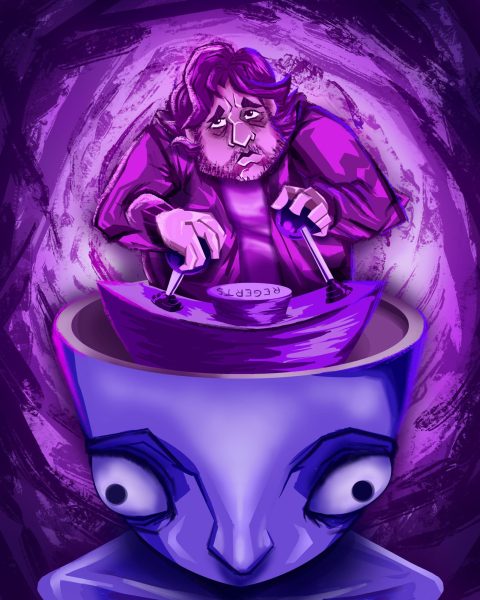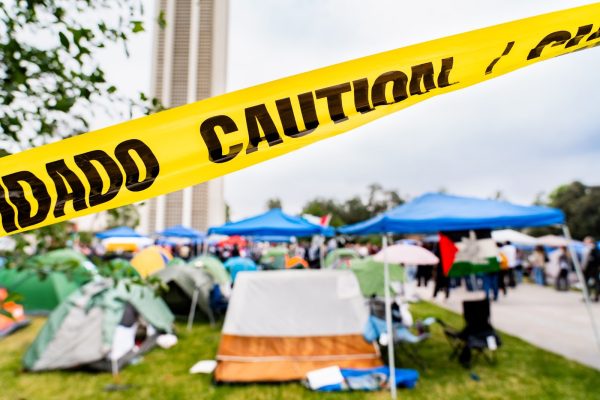Cultural Appropriation Coming To A Halloween Store Near You
Sacred Mexican holiday hijacked by American consumerism
Story by Cynthia Schroeder
Halloween season has arrived. It is the time for candy corn, jack-o-lanterns, and a slew of offensive costumes to hit local Halloween parties everywhere.
For the past few years, the Mexican holiday Día de los Muertos, or “Day of the Dead” in English, has increasingly become a part of mainstream American culture which has induced several negative repercussions — the most obvious being the appropriation of Mexican culture for the sake of revenue.
Origins
Día de los Muertos was observed by the indigenous people of Mexico long before the land was conquered by the Spanish; it is an ancient tradition and ritual celebrating the life of the deceased. Artist Julian Mendoza, 55, who passionately studies the native culture, said the holiday was originally referred to as “mihcailhuitl” (meek-kal-weet) which is Nahuatl (nah-waht), the natives’ language, for “Day of the Dead.” After the Spanish emigrated to Mexico, they put their own spin on the holiday making it coincide with their Christian beliefs and coined the term “Día de los Muertos.” Additionally, the Spanish Christians moved the holiday from modern day August to occur at the same time as “All Saints’ Day” which is on November 1. In essence, the Spanish were the first to appropriate the holiday.

Modern Día de los Muertos is celebrated in Mexico on November 1 and 2. There are several traditions connected to the holiday. Observers normally build private altars called ofrendas in honor of a deceased loved one. These altars are adorned with photos of the deceased, the deceased’s favorite foods and beverages, sugar skulls, Mexican marigolds and even some of the deceased’s personal belongings. On these days, Mexicans nationwide partake in large festivals in which they dress in elaborate calavera, (skull) makeup and outfits including Día de los Muertos imagery.
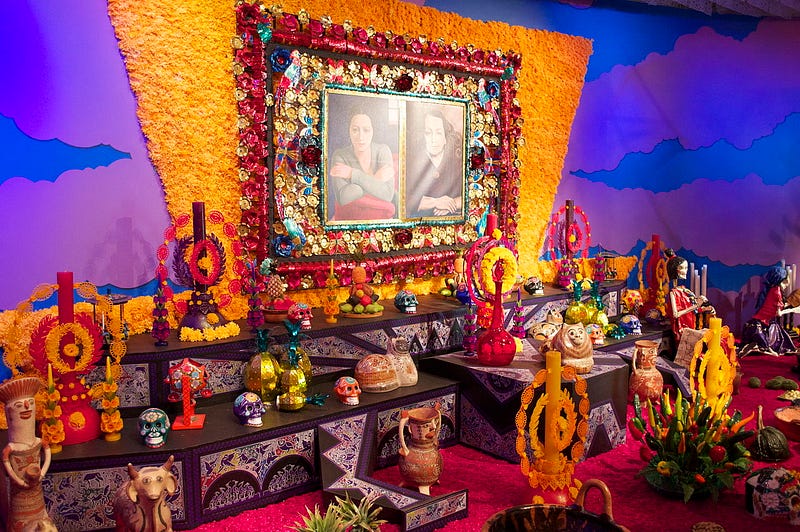
Día de los Muertos in the US
Now in the United States, costume stores, costume websites and even clothing websites are advertising Day of the Dead inspired costumes for Halloween. Seemingly broad hashtags such as #halloweenmakeup or #halloweencostume are clogged with images of Day of the Dead inspired makeup and costumes. Americans have deemed the sacred tradition to be trendy and want in on it.

The commercialization of Día de los Muertos in the United States has spawned a wave of misconception about the actual holiday. A common misconception about Día de los Muertos is that it is “Mexican Halloween”. The following is from “This-Is-Not-Our-Dia,” a website devoted to debunking Día de los Muertos myths:
“When [Día de los Muertos] is used as a Halloween costume, it reduces a sacred day to one cheap costume and makes the special holiday seem one-dimensional to outsiders.”
Some Mexicans believe that calavera costumes and sexy versions of Catrinas promote the belief that the sugar skull makeup is the only aspect of Día de los Muertos. They find it offensive that white America can be admired and gawked at for such creativity for the very holiday they tried to suppress and that is still considered to be “savage” in some Anglo’s eyes.
Mexican-American artist Ray Vargas, 35, said, “It is scary and troubling when you realize you are witnessing an aspect of your culture becoming very popular. It is alarming.”
“There’s always that threat that it’s heading into caricature and something exploiting and insulting,” Vargas added.

In addition to there being an array of Día de los Muertos inspired costumes on the market, it is now common to see Día de los Muertos inspired costume parties and there is even a rave called “Hard: Day of the Dead”, that has been held on Halloween day in the past. Furthermore, Electronic Dance Music has nothing to do with the actual holiday.
Rosie Martinez, a 20-year-old Mexican-American pharmacy technician student in Los Angeles, said that the appropriation of Día de los Muertos and Mexican culture makes her feel disgusted. “It stereotypes our people into certain roles – day of the dead face paint, Cinco de Mayo, tacos, booze. It’s just really sad to me that they think that it’s okay and don’t see it as cultural appropriation.”
Martinez and Mendoza both agree that it is a way for corporations to make a quick buck and likely do not blatantly seek to appropriate cultures. “It’s not that they want to disrespect our culture, it’s that they want to make money and this is the next opportunity,” said Mendoza.
“As long as they’re going to sell more alcohol that day, they could care less if there was a battle won, independence from colonization, it’s just more money being made,” Mendoza added.
Appropriation v. Appreciation
Many photographers, such as Mexican-American photographer Chris Gomez, 34, capture their take on the holiday and tradition. Gomez shoots a Mexicana series that is filled with Día de los Muertos imagery. He maintains that there is a fine line between cultural appreciation and appropriation — appreciation involves soul and good intentions, no matter your ethnic background.
“There is no soul in buying sugar skull patches and stickers from a craft store. I’ve done a lot of research about my people and that inspires my work. It stems from wanting to learn more.” He added that Día de los Muertos is very personal because it deals with family and loved ones passing and is upset that some people negate that fact.
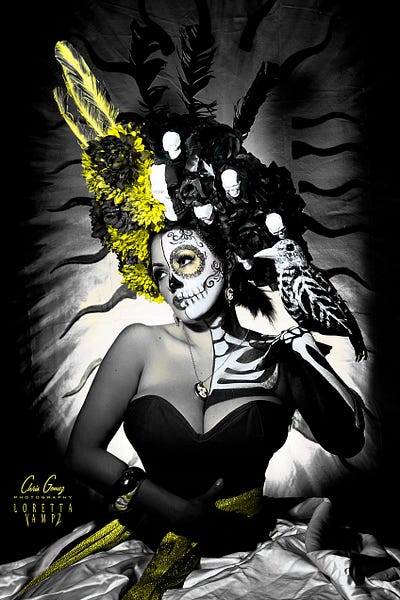
Mendoza’s wife, Lisa Love Mendoza, a well known pinup model and spokesperson for the Día de los Muertos Festival in Whittier, Calif., said that she tries to not let the appropriation bother her. “I focus on doing my thing and promoting what I feel is more positive. I pretty much ignore the Party City stuff. There’s not much I can do so I try to demonstrate a different idea.” Love prides herself on putting out images that she feels are positive representations of Mexican culture.
Love and Gomez are like minded in this sense and work together often to put out the aforementioned type of imagery. “I want to put something out there so that people don’t look at us in a negative light. This is a proud, rich in culture people. It needs to be seen,” said Gomez.
Other Mexicans take a different stance and believe that outsiders of the culture should stay away from the holiday altogether. Their feeling is that if outsiders of the culture truly appreciate Día de los Muertos, they will understand the deep significance behind it and recognize that their place is not in it.
This-Is-Not-Our-Dia states: There is no reason that you cannot respect and appreciate it from five feet away. Do not insist upon inserting yourself in a sacred holiday simply to further your own status or self-image. If your reason is ‘I want to honor my dead too!’ then there are plenty of ways to do so without putting yourself under the Día de los Muertos umbrella. You do not need to insert yourself into a sacred holiday to celebrate your passed loved ones.
Appropriation Within Our Own Raza
Some Mexicans believe that their fellow brothers and sisters are to blame for some of the appropriation happening and in turn, are guilty of partaking in it. Mendoza said, “The sad part is when people from that existing culture participate [in the appropriative events]. We give [the appropriators] the green light to do that. I don’t think that they know that they are a large part of other people treating our culture with disrespect.” He added that Mexicans have the power to choose not to be a part of it since being a part of the appropriative activity is a personal decision.
Martinez deduced that the nonchalance experienced by some Mexican-Americans on the issue of appropriation is because of the Mexican-American culture itself. “[Mexican-Americans] are a new breed, we might experience some traditions from our parents’ homeland but we’re growing up in an American society that tells us we need to buy, spend money partying and then buy some more. It’s more important to have the latest things rather than to learn about tradition,” Martinez said.
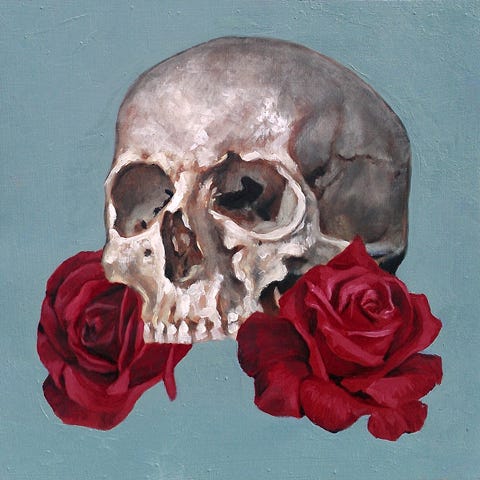
Vargas said this type of appropriation from within the culture can be avoided by always keeping in mind what message is being sent through one’s own actions. He added that he is always conscious about the message he is sending while producing art. “Even if you don’t think there is a message being sent, whether you’re not aware of it or just don’t not care, there is always a message being sent through actions and art.”
Vargas said that he and a few artists are also conscious of which events they choose to showcase their work at as a way to preserve the cultural integrity of their Día de los Muertos-inspired art because not every event holder has good intentions. Some event holders are out to capitalize on the popularity of Día de los Muertos as well.
In addition, not every artist has good intentions — some artists purposely create Día de los Muertos imagery that is mashed up with another non-related aspect of pop culture in an effort to just sell art.
“Not every idea would be a responsible one to put out there. I try to take things I love and try to put it together in a way that makes sense. I’m not just putting Pee Wee Herman in calavera makeup or whatever else is popular,” Vargas said.
The Future of Día de los Muertos
With the Latino population becoming one of the largest communities in the United States, it is possible that Latino history is still being written. Some Mexican-Americans are optimistic that the rise in interest in Día de los Muertos can be a teachable moment for non-Mexican identifying America.
Gomez said, “There’s so much opportunity right now with Day of the Dead becoming a part of pop culture, we can teach the true meaning.”
Martinez had a similar sentiment. “The advantages are that more people get to see our culture and how we value life. It can make people stop and think and take at least a day to remember the people that came before them.”
Vargas predicts that the Día de los Muertos trend will come in two waves — a popularity wave, where we are now, and a wave of awareness which is where we are headed.
He added that it is getting harder to spout hate on the internet because our world is getting smaller with social media. The more people that see hate being spread across the Internet, the more it will come back to the person spouting hate. Now that it is known that the cultural appropriation of Día de los Muertos is out there, it can’t stay hidden and many Mexicans feel the need to address it in their own way.
“It’s going to cause clashes and uncomfortable conversations but it has to happen in order for it to get better. It’s like growing pains, it’s a necessary part of heading in the right direction,” Vargas said.
For more about the artists mentioned in the story, visit their websites:
Julian Mendoza: fleetlinefineart.com
Lisa Love Mendoza: lisalove.com; mexicapinups.com
Chris Gomez: https://www.facebook.com/chrisgomezphotography
Ray Vargas: rayvargas.com
Header photo of Paulina Hernandez, 45, a street performer from an indigenous group called Danza Azteca Xochipilli, by Pablo Unzueta.
Substance is a publication of the Mt. San Antonio College Journalism Program. The program recently moved its newsroom over to Medium as part of a one-year experiment. Read about it here.

